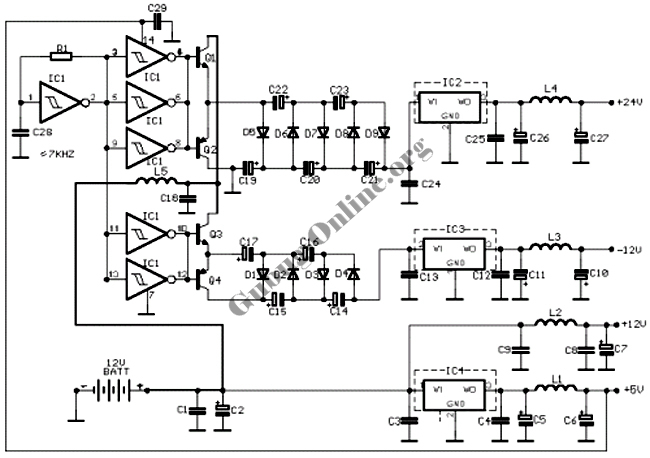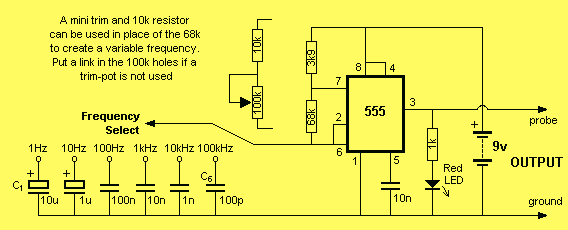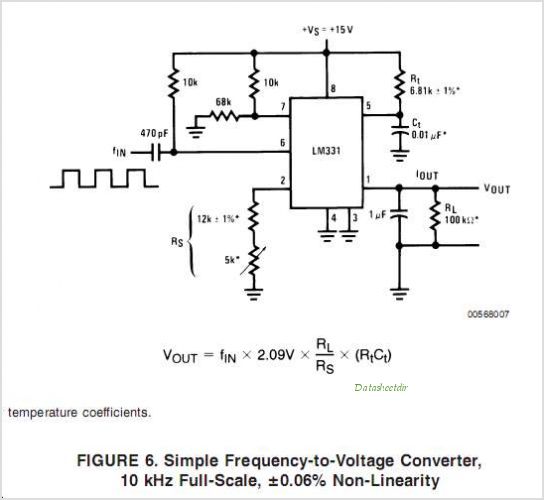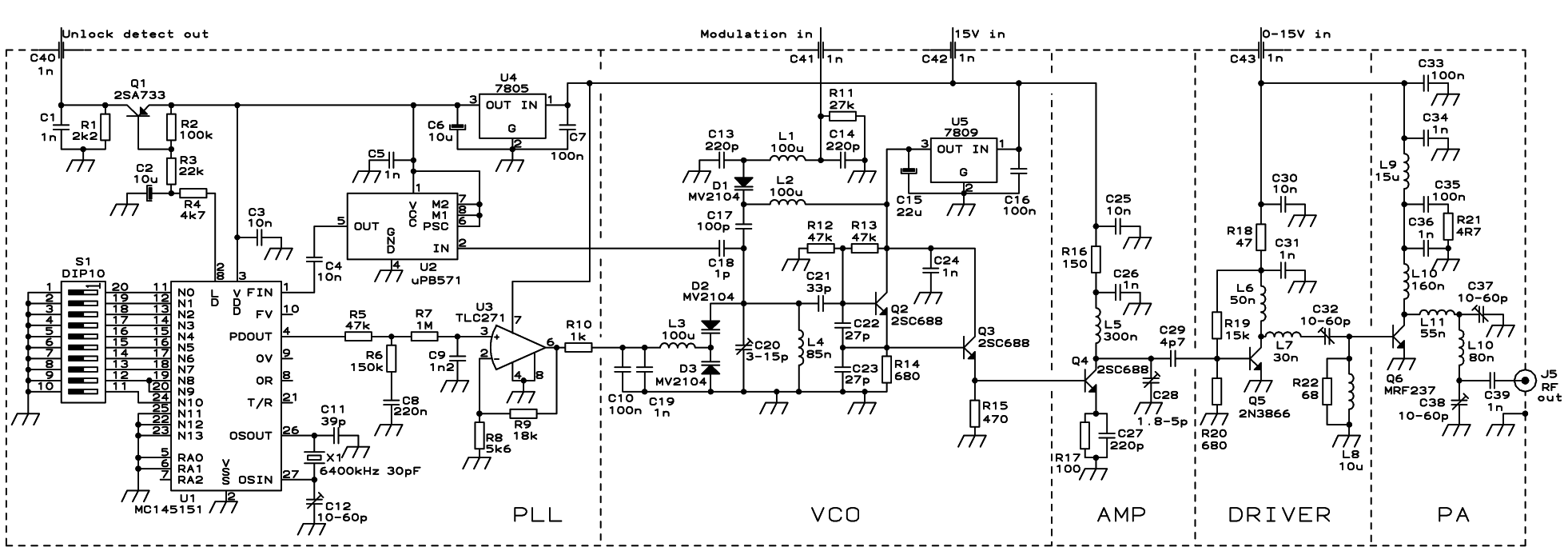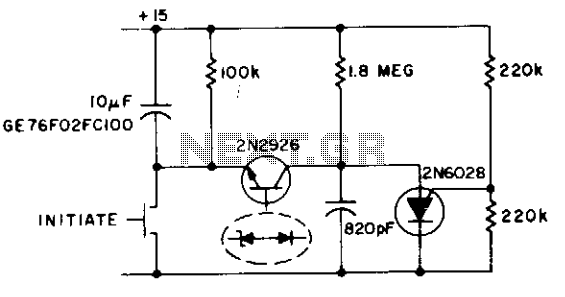
FM oscillator frequency stabilization circuit diagram
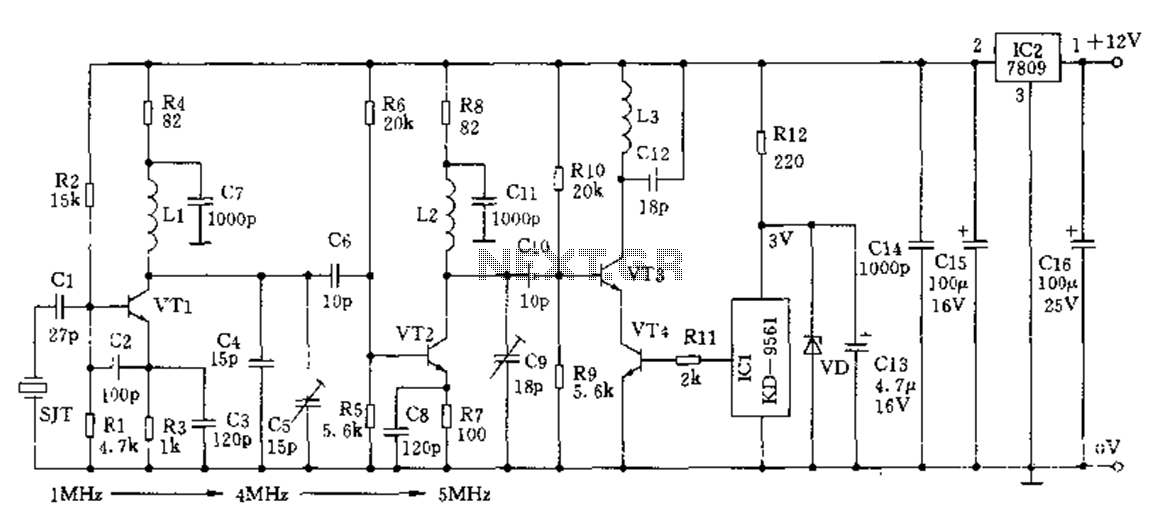
The crystal frequency stabilization of a frequency modulation circuit is illustrated below.
The frequency modulation (FM) circuit utilizes crystal frequency stabilization to ensure precise frequency control and stability. This process involves the use of a quartz crystal oscillator, which provides a highly accurate and stable frequency reference. The crystal's natural resonant frequency is leveraged to maintain the desired output frequency of the FM circuit, minimizing drift due to temperature variations and other environmental factors.
In the schematic, the crystal oscillator is typically connected to an amplifier stage, which boosts the output signal to the required level for modulation. The output from the crystal oscillator feeds into a frequency modulator, where the carrier signal is modulated by the information signal. This modulation can be achieved using various methods, including direct frequency modulation or phase modulation.
Feedback mechanisms may also be integrated into the design to further enhance stability. For instance, a phase-locked loop (PLL) can be employed to lock the output frequency to the crystal reference, ensuring that any variations are corrected in real time. This feedback loop consists of a phase detector, low-pass filter, and voltage-controlled oscillator (VCO), which work together to maintain the output frequency in alignment with the crystal oscillator.
Overall, the implementation of crystal frequency stabilization in FM circuits is critical for applications requiring high fidelity and low distortion, such as in communication systems, broadcasting, and audio transmission. The reliability of the crystal oscillator contributes significantly to the overall performance and efficiency of the frequency modulation circuit.Crystal frequency stabilization of frequency modulation circuit is shown below:
The frequency modulation (FM) circuit utilizes crystal frequency stabilization to ensure precise frequency control and stability. This process involves the use of a quartz crystal oscillator, which provides a highly accurate and stable frequency reference. The crystal's natural resonant frequency is leveraged to maintain the desired output frequency of the FM circuit, minimizing drift due to temperature variations and other environmental factors.
In the schematic, the crystal oscillator is typically connected to an amplifier stage, which boosts the output signal to the required level for modulation. The output from the crystal oscillator feeds into a frequency modulator, where the carrier signal is modulated by the information signal. This modulation can be achieved using various methods, including direct frequency modulation or phase modulation.
Feedback mechanisms may also be integrated into the design to further enhance stability. For instance, a phase-locked loop (PLL) can be employed to lock the output frequency to the crystal reference, ensuring that any variations are corrected in real time. This feedback loop consists of a phase detector, low-pass filter, and voltage-controlled oscillator (VCO), which work together to maintain the output frequency in alignment with the crystal oscillator.
Overall, the implementation of crystal frequency stabilization in FM circuits is critical for applications requiring high fidelity and low distortion, such as in communication systems, broadcasting, and audio transmission. The reliability of the crystal oscillator contributes significantly to the overall performance and efficiency of the frequency modulation circuit.Crystal frequency stabilization of frequency modulation circuit is shown below:
